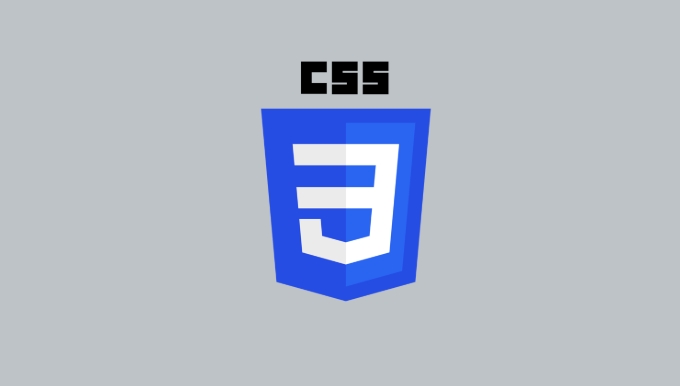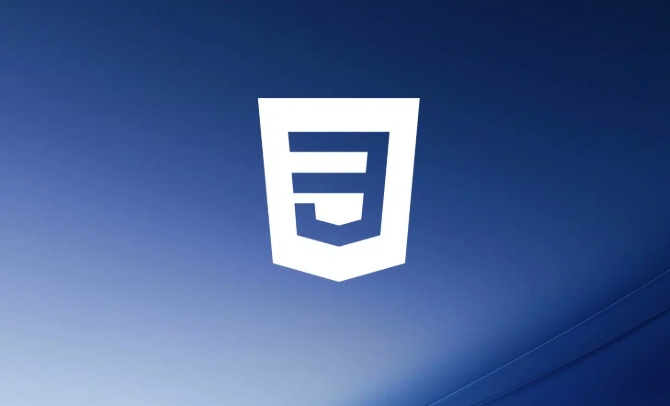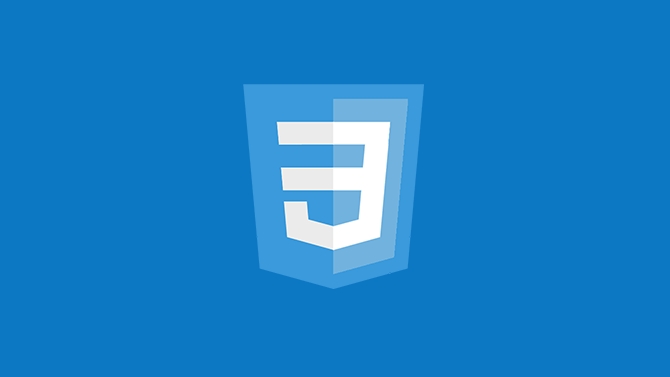CSS variables improve the neatness and maintenance of the code by storing reusable values ??and achieving one modification and multiple modifications. Its core role is to simplify stylesheet management and support dynamic updates and local scope control. When using it, you need to define variables with the -- prefix, call them through the var() function, pay attention to naming specifications and scope division, and be wary of spelling errors and compatibility issues. The specific points are as follows: 1. Use --prefix to define variables, usually declare global variables in: root; 2. Reference variables through the var() function; 3. Any CSS value such as color, size, shadow, etc. can be stored; 4. Local variables should be defined in a specific selector to avoid conflicts; 5. Dynamic updates can be achieved through JavaScript or media queries; 6. Pay attention to spell checking, inheritance behavior and browser compatibility issues. The rational use of CSS variables can significantly improve development efficiency and code maintainability.

Using CSS variables (also known as custom properties) can make your stylesheets cleaner, more maintainable, and easier to update. They let you store reusable values—like colors, font sizes, spacing—and change them in one place instead of hunting through your code.

What Are CSS Variables?
CSS variables are defined using the -- prefix inside a selector, usually :root for global scope. You access them with the var() function.

:root {
--primary-color: #007bff;
--spacing: 1rem;
}Then use them like this:
.button {
background-color: var(--primary-color);
padding: var(--spacing);
}They're not just for colors—you can store anything: sizes, shadows, font stacks, even complex gradients.

How to Scope Variables Locally
By default, defining variables on :root makes them globally available. But sometimes you want variables that only apply in certain parts of the site—like a dark theme or a specific component.
Just define them on a selector:
.card {
--bg-color: #f8f8f8;
background-color: var(--bg-color);
} Now, only elements under .card will see that value. This helps avoid naming conflicts and keeps things modular.
Tips:
- Use meaningful names (
--header-padding, not--p1) - Keep local variables tightly scoped
- Don't overdo it—some values ??are fine being hard-coded
Updating Variables Dynamically
One of the big wins with CSS variables is being able to change them at runtime—say, switching themes or adjusting layout based on user input.
You can do this in JavaScript:
document.documentElement.style.setProperty('--primary-color', '#ff0000');
Or with media queries:
@media (max-width: 600px) {
:root {
--spacing: 0.5rem;
}
}This flexibility makes responsive design and theming easier without needing extra classes or preprocessors.
Common Pitfalls and Gotchas
Even though CSS variables are powerful, there are a few things to watch out for:
- No fallback if misspelled : If you typo a variable name, like
var(--primry-color), it won't work and won't warn you. - Cascading behavior matters : Variables inherit like normal properties, so changing a parent's variable affects children.
- Old browser support : Most modern browsers support them, but not IE11.
To stay safe:
- Double-check variable names
- Use fallbacks when needed:
color: var(--text-color, black); - Consider tools like PostCSS if you need broader compatibility
That's the core of working with CSS variables. They're not complicated, but they do require attention to naming and scope. Once you get used to them, you'll probably wonder how you ever managed without.
The above is the detailed content of CSS tutorial on variables and custom properties. For more information, please follow other related articles on the PHP Chinese website!

Hot AI Tools

Undress AI Tool
Undress images for free

Undresser.AI Undress
AI-powered app for creating realistic nude photos

AI Clothes Remover
Online AI tool for removing clothes from photos.

Clothoff.io
AI clothes remover

Video Face Swap
Swap faces in any video effortlessly with our completely free AI face swap tool!

Hot Article

Hot Tools

Notepad++7.3.1
Easy-to-use and free code editor

SublimeText3 Chinese version
Chinese version, very easy to use

Zend Studio 13.0.1
Powerful PHP integrated development environment

Dreamweaver CS6
Visual web development tools

SublimeText3 Mac version
God-level code editing software (SublimeText3)

Hot Topics
 CSS tutorial for creating loading spinners and animations
Jul 07, 2025 am 12:07 AM
CSS tutorial for creating loading spinners and animations
Jul 07, 2025 am 12:07 AM
There are three ways to create a CSS loading rotator: 1. Use the basic rotator of borders to achieve simple animation through HTML and CSS; 2. Use a custom rotator of multiple points to achieve the jump effect through different delay times; 3. Add a rotator in the button and switch classes through JavaScript to display the loading status. Each approach emphasizes the importance of design details such as color, size, accessibility and performance optimization to enhance the user experience.
 Addressing CSS Browser Compatibility issues and prefixes
Jul 07, 2025 am 01:44 AM
Addressing CSS Browser Compatibility issues and prefixes
Jul 07, 2025 am 01:44 AM
To deal with CSS browser compatibility and prefix issues, you need to understand the differences in browser support and use vendor prefixes reasonably. 1. Understand common problems such as Flexbox and Grid support, position:sticky invalid, and animation performance is different; 2. Check CanIuse confirmation feature support status; 3. Correctly use -webkit-, -moz-, -ms-, -o- and other manufacturer prefixes; 4. It is recommended to use Autoprefixer to automatically add prefixes; 5. Install PostCSS and configure browserslist to specify the target browser; 6. Automatically handle compatibility during construction; 7. Modernizr detection features can be used for old projects; 8. No need to pursue consistency of all browsers,
 Creating custom shapes with css clip-path
Jul 09, 2025 am 01:29 AM
Creating custom shapes with css clip-path
Jul 09, 2025 am 01:29 AM
Use the clip-path attribute of CSS to crop elements into custom shapes, such as triangles, circular notches, polygons, etc., without relying on pictures or SVGs. Its advantages include: 1. Supports a variety of basic shapes such as circle, ellipse, polygon, etc.; 2. Responsive adjustment and adaptable to mobile terminals; 3. Easy to animation, and can be combined with hover or JavaScript to achieve dynamic effects; 4. It does not affect the layout flow, and only crops the display area. Common usages are such as circular clip-path:circle (50pxatcenter) and triangle clip-path:polygon (50%0%, 100 0%, 0 0%). Notice
 What is the difference between display: inline, display: block, and display: inline-block?
Jul 11, 2025 am 03:25 AM
What is the difference between display: inline, display: block, and display: inline-block?
Jul 11, 2025 am 03:25 AM
Themaindifferencesbetweendisplay:inline,block,andinline-blockinHTML/CSSarelayoutbehavior,spaceusage,andstylingcontrol.1.Inlineelementsflowwithtext,don’tstartonnewlines,ignorewidth/height,andonlyapplyhorizontalpadding/margins—idealforinlinetextstyling
 Styling visited links differently with CSS
Jul 11, 2025 am 03:26 AM
Styling visited links differently with CSS
Jul 11, 2025 am 03:26 AM
Setting the style of links you have visited can improve the user experience, especially in content-intensive websites to help users navigate better. 1. Use CSS's: visited pseudo-class to define the style of the visited link, such as color changes; 2. Note that the browser only allows modification of some attributes due to privacy restrictions; 3. The color selection should be coordinated with the overall style to avoid abruptness; 4. The mobile terminal may not display this effect, and it is recommended to combine it with other visual prompts such as icon auxiliary logos.
 What is the CSS Painting API?
Jul 04, 2025 am 02:16 AM
What is the CSS Painting API?
Jul 04, 2025 am 02:16 AM
TheCSSPaintingAPIenablesdynamicimagegenerationinCSSusingJavaScript.1.DeveloperscreateaPaintWorkletclasswithapaint()method.2.TheyregisteritviaregisterPaint().3.ThecustompaintfunctionisthenusedinCSSpropertieslikebackground-image.Thisallowsfordynamicvis
 How to create responsive images using CSS?
Jul 15, 2025 am 01:10 AM
How to create responsive images using CSS?
Jul 15, 2025 am 01:10 AM
To create responsive images using CSS, it can be mainly achieved through the following methods: 1. Use max-width:100% and height:auto to allow the image to adapt to the container width while maintaining the proportion; 2. Use HTML's srcset and sizes attributes to intelligently load the image sources adapted to different screens; 3. Use object-fit and object-position to control image cropping and focus display. Together, these methods ensure that the images are presented clearly and beautifully on different devices.
 What are common CSS browser inconsistencies?
Jul 26, 2025 am 07:04 AM
What are common CSS browser inconsistencies?
Jul 26, 2025 am 07:04 AM
Different browsers have differences in CSS parsing, resulting in inconsistent display effects, mainly including the default style difference, box model calculation method, Flexbox and Grid layout support level, and inconsistent behavior of certain CSS attributes. 1. The default style processing is inconsistent. The solution is to use CSSReset or Normalize.css to unify the initial style; 2. The box model calculation method of the old version of IE is different. It is recommended to use box-sizing:border-box in a unified manner; 3. Flexbox and Grid perform differently in edge cases or in old versions. More tests and use Autoprefixer; 4. Some CSS attribute behaviors are inconsistent. CanIuse must be consulted and downgraded.






